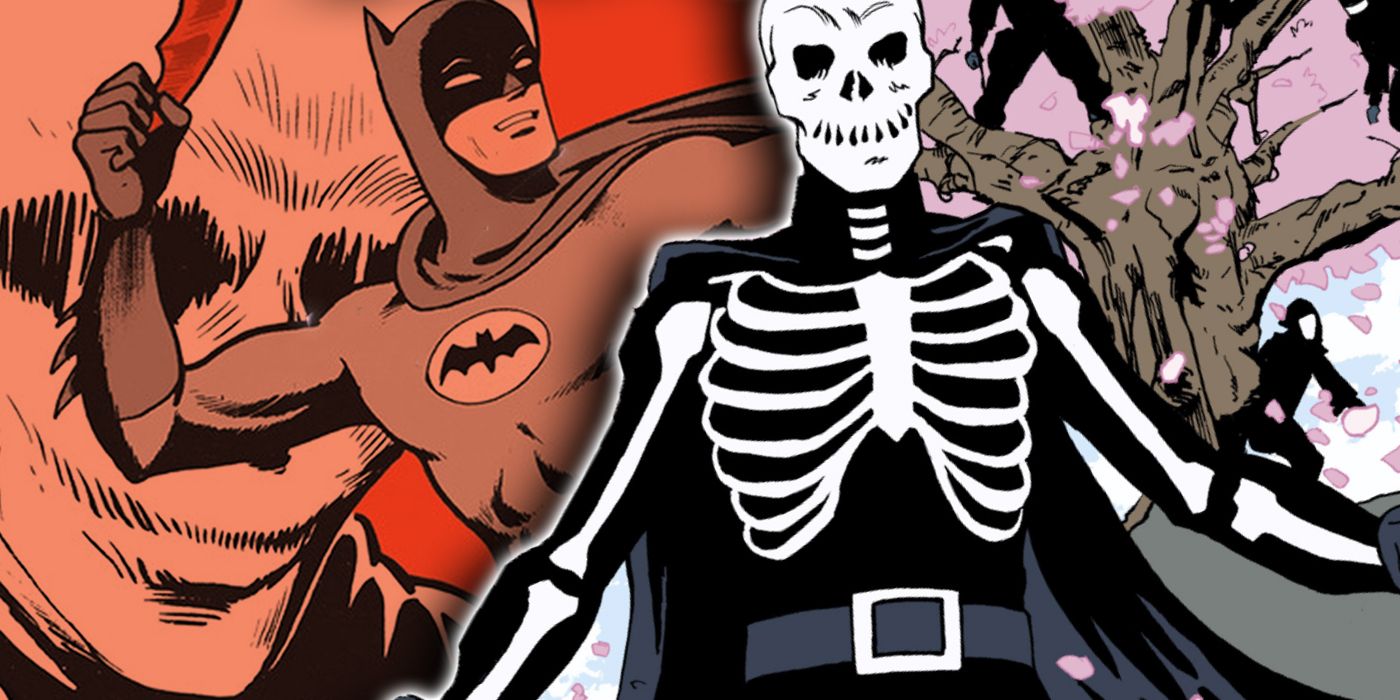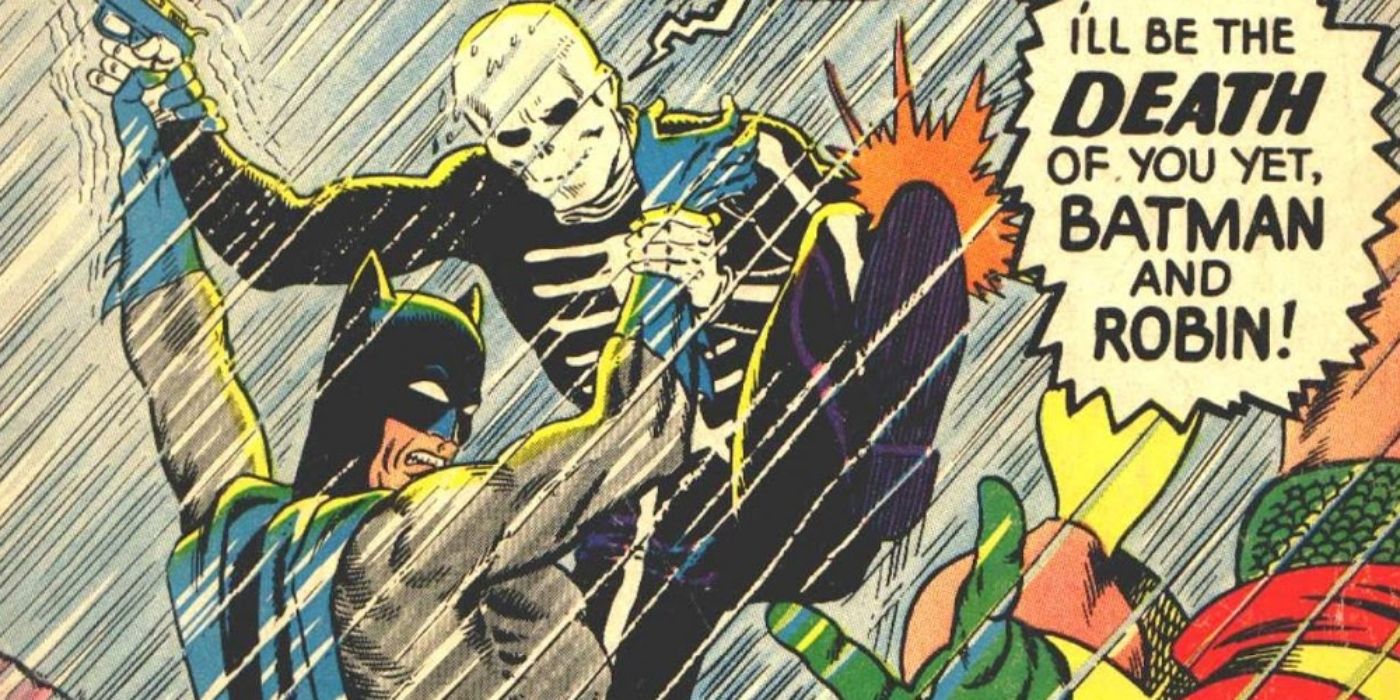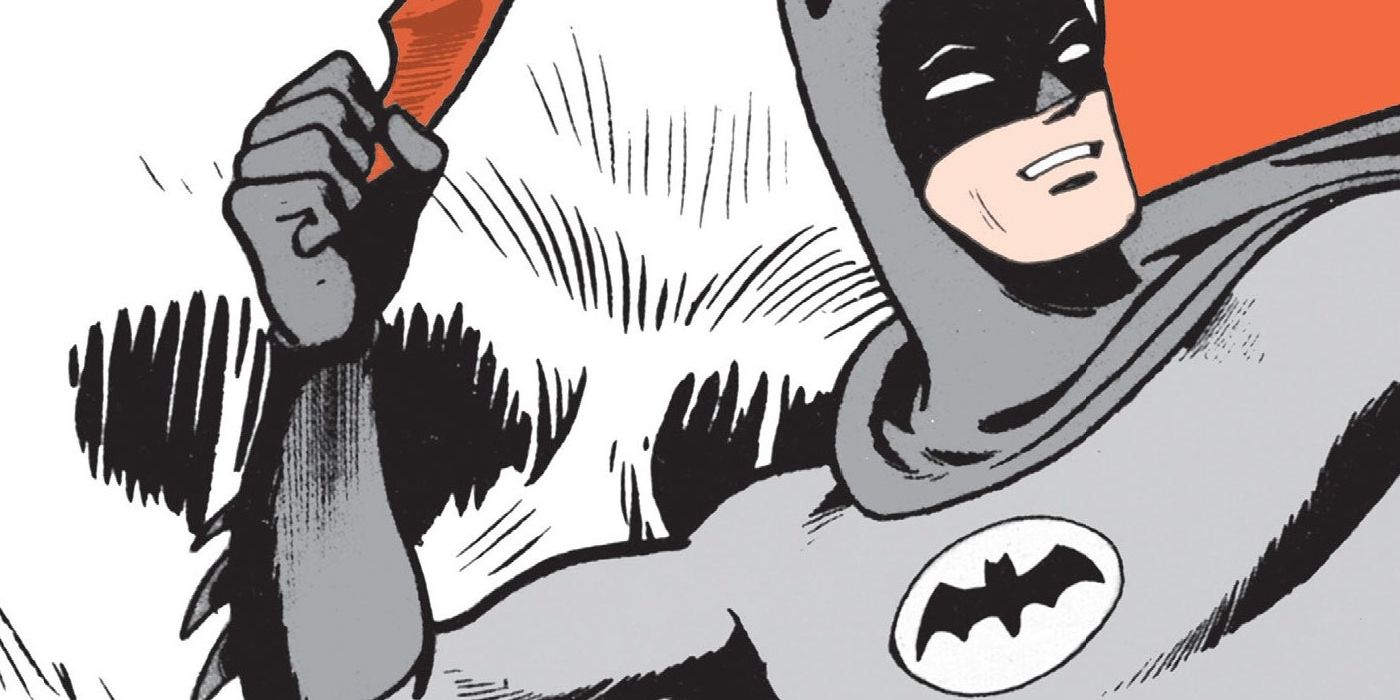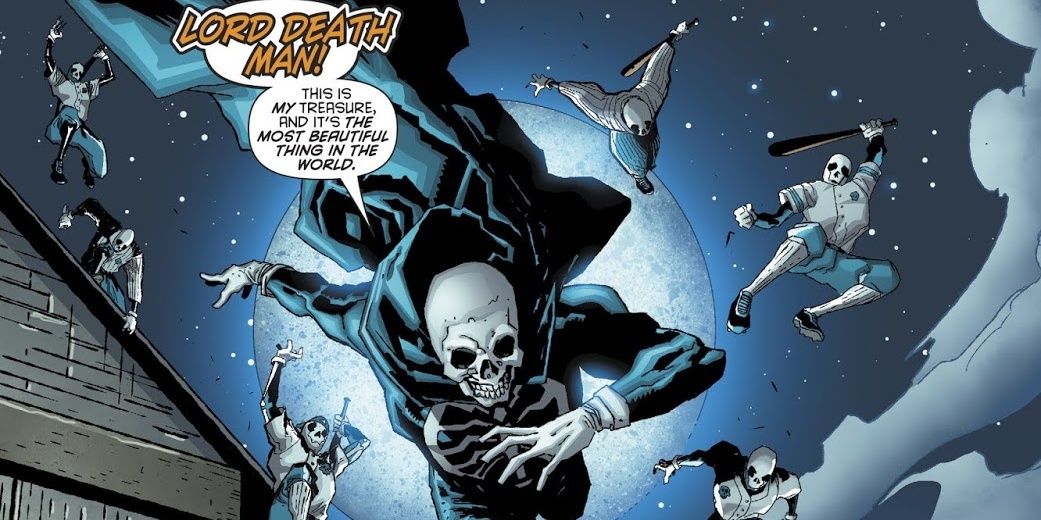Over the past 80 years, Batman has faced a countless number of villains in every form of media imaginable. Even though Batman's rogues' gallery includes iconic bad guys like Joker and Two-Face, many of the Dark Knight's lesser foes faded away into obscurity after one or two appearances.
While Death-Man seemed destined to be one of Batman's forgotten foes, the villain became one of Batman's most prominent rising stars decades after he was introduced, thanks to a manga that reimagined him as Lord Death-Man.
DEATH-MAN
The original Death Man story came all the way back in 1966's Batman #180, by Robert Kanigher and Sheldon Moldoff. Death-Man was a thief who ended up being caught by Batman and Robin during a robbery attempt. Although he was fully confident in his ability to escape whatever imprisonment Batman led him to, he seemingly died while on trial. After being buried, Death-Man somehow appeared to come back to life, even doing so again when Batman caught him a second time.
Eventually, a befuddled Batman and Robin went to visit Death Man's grave, which they found to be empty and surrounded by the villain and his waiting henchmen. After Batman was wounded in the shoot-out, Death Man revealed that his apparent ability to resurrect himself was merely an old yoga mediation trick that could make a living person seem as if they were dead. But lifting his gun in triumph, Death Man was electrocuted by a stray lightning bolt, which killed him instantly. This was the only appearance of Death Man, who quickly faded into obscurity outside of an adaptation of the original story.
LORD DEATH MAN
Batman #181 ended up being one of the issues that was adapted by Japanese creator Jiro Kuwata for his four-issue 1960s Batman manga. The new Death Man story was very similar to the original storyline, albeit with stylistic changes. Death Man became Lord Death Man, and the lengthened page length -- Kuwata had over double as much space to tell the story -- allowed the famed manga artist to flesh out action beats and the character beats.
The manga also proved more bombastic at times than the Silver Age story, and it included an extended dream sequence where Batman is haunted by the fact that he can't figure out how to defeat Lord Death Man. The original featured a similar sequence but in a far more reduced form. The Japanese story also ended differently, with Lord Death Man boarding a helicopter to try and escape Batman, only to crash into a power line and seemingly perish.
In 2008, Bat-Manga: The Secret History of Batman in Japan reprinted some of Kuwata's work in the west for the very first time, which ed to the official translation of all of Kuwata's Batman in 2013. With this new exposure, Lord Death Man went from being a forgotten obscurity to a cult-favorite villain almost overnight.
MODERN LORD DEATH MAN
Lord Death Man officially returned to the DC Universe shortly after the Bat-Manga introduced American audiences to the Japanese incarnation of the character. Grant Morrison and Yanick Paquette featured the villain -- now a deadly Japanese crime boss -- in the initial issues of Batman Incorporated. He would later appear across a handful of DC titles in the post-Flashpoint and Rebirth version of the DC universe with a new genuine superpower: he literally can come back from the dead no matter what injury befell him, including being reduced to ashes after he became infatuated with Harley Quinn.
Since his rediscovery, Lord Death Man has also appeared in other versions of Batman too, such as the Batman '66 comics continuity where he bedeviled the Adam West version of the character in comics. He's even appeared in the Batman: The Brave & the Bold episode, "Bat-Mite Presents Batman's Strangest Cases!" The episode is a three-part anthology, which tells unique tales from across the multiverse. One of them is an adaptation of Kuwata's story, written by Paul Dini and presented in the style of early Japanese anime of the era.
The Japanese-inspired take on the character has become his standard new personality, which makes him stand out from the rest of the DC Universe. Even compared to Batman's other colorful villains, Lord Death man has an energy and bombast to him that separates him even from other Batman villains. Coupled with his simple but memorable design, Lord Death Man has succeeded more in the modern-day than the original version of the character ever did.




